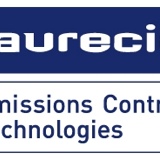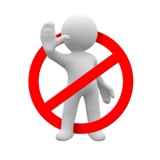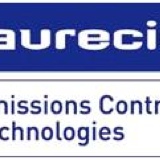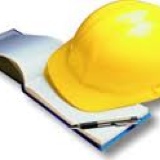Information
-
Document No.
-
Program Details:
-
Machine Builder:
-
Machine Type:
-
Machine Number:
-
Conducted on
-
Andy Proctor Program HSE Manager Manufacturing Engineering FECT Europe +447500 222 037 Andy.Proctor@faurecia.com
-
Location
-
Personnel
European Machinery Directive 2006/42 1.1.1 Definitions... (a) ‘hazard’ means a potential source of injury or damage to health; (b) ‘danger zone’ means any zone within and/or around machinery in which a person is subject to a risk to his health or safety; (c) ‘exposed person’ means any person wholly or partially in a danger zone; (d) ‘operator’ means the person or persons installing, operating, adjusting, maintaining, cleaning, repairing or moving machinery; (e) ‘risk’ means a combination of the probability and the degree of an injury or damage to health that can arise in a hazardous situation; (f) ‘guard’ means a part of the machinery used specifically to provide protection by means of a physical barrier; (g) ‘protective device’ means a device (other than a guard) which reduces the risk, either alone or in conjunction with a guard; (h) ‘intended use’ means the use of machinery in accordance with the information provided in the instructions for use; (i) ‘reasonably foreseeable misuse’ means the use of machinery in a way not intended in the instructions for use, but which may result from readily predictable human behaviour.
-
Add media
Item 1 - HSE Mandatory Rule (MR1) LOTO Lock Out Tag Out:
-
Add media
-
1) Energy switch present?
-
2) Good working order?
-
3) Situated outside the danger zone?
-
European Machinery Directive 2006/42 - Section 1.6.2 Access to operating positions and servicing points:
Machinery must be designed and constructed in such a way as to allow access in safety to all areas where intervention is necessary during operation, adjustment and maintenance of the machinery. -
4) Switch is lockable to FECT Standard?<br>(Multi-Bar)
-
5) Energy switch labelled to FECT LOTO Standard?
-
Best Practice: Laptop PLC & power socket to be implemented outside the electrical cabinet.
Item 2 - HSE Mandatory Rule (MR2) Energy Release:
-
1) Gas, Air, Water, Steam: Serviceable Lockable Valves & Gauges fitted outside the danger zone. Gauges read zero after energy release. Gauges show pressure when energy should be present?
-
European Machinery Directive 2006/42 - Section 1.5.3 Energy supply other than electricity
Where machinery is powered by source of energy other than electricity, it must be so designed, constructed and equipped as to avoid all potential risks associated with such sources of energy. -
2) Electrical: Analogue or Digital Voltmeters are fitted across each phase. Voltmeter read zero after energy release & show voltage when energy should be present?
-
3) Hydraulics: gauges fitted clearly visible from outside the danger zone. Gauges read zero after switch off/energy release. Gauges show pressure when energy should be present?
-
4) LOTO points are identified on the machine?
-
Best Practice: All Machine energy switches to be located together, outside the danger zone at the rear of machine.
Item 3 - HSE Mandatory Rule (MR2) Mechanical blocks:
-
1) Gravity: Mechanical blocks provided to safety support loads?
-
2) Stored Energy: Any stored energy like springs under tension / heat?
-
3) Mechanical Blocks must be Interlocked to the machine safety circuit?
Item 4 - HSE Mandatory Rule (MR4) Safety Guards:
-
1) Open access danger zones are clearly defined? (Yellow or Yellow & Black Zebra)<br>Best Practice Yellow RAL Code / Black RAL Code
-
2) Open access Horizontal danger zones are protected 100% by radar, and or type 4 light curtains?<br>Machine builder must check and confirm safety distance between dangerous moving parts & safety device!
-
3) Open access Vertical danger zones are protected 100% by radar, and or type 4 light curtains?<br>Machine builder must check and confirm safety distance between dangerous moving parts & safety device!
-
4) Closed access danger zones are protected 100% by 1.8m high perimeter guarding (including access gates) & access gates are properly interlocked (Mesh size is appropriate for the application?
-
5) Design of machine guarding must allow for tool change over, TPM activities, & general 5s cleaning?<br>
-
European Machinery Directive 2006/42 - Section 1.4.1 enable essential work to be carried out on the installation and/or replacement of tools and for maintenance purposes by restricting access exclusively to the area where the work has to be done, if possible without the guard having to be removed or the protective device having to be disabled
-
6) Fixed guards must be securely fixed in place and fixing must remain with the guard when removed?
-
European Machinery Directive 2006/42 - Section 1.4.2.1 Fixed guards:
Fixed guards must be fixed by systems that can be opened or removed only with tools.
Their fixing systems must remain attached to the guards or to the machinery when the guards are removed.
Where possible, guards must be incapable of remaining in place without their fixings. -
7) Captive key system / safety switch on all machine access door are suitable & sufficient?<br>European Machinery Directive - Section 1.5.14 Machinery must be designed, constructed or fitted with a means of preventing an exposed person from being enclosed within it!
-
European Machinery Directive 2006/42 -Section 1.5.14 Risk of being trapped in a machine:
Machinery must be designed, constructed or fitted with a means of preventing a person from being enclosed within it or, if that is impossible, with a means of summoning help
Item 5 - HSE Mandatory Rule (MR5) Fail Safe:
-
1) Electrical Safety devices are fail safe fitted and are checked by a qualified person with results recorded?
-
2) One by one, test each safety device in each machine mode for each machine axis and confirm machine will not start and no movement of any part of the machine?
-
Machine builder must check and confirm Fail-Safe Test for each safety device.
Item 6 - HSE Mandatory Rule (MR6) OK 1st Part:
-
1) The design of the machine shall allow the safety guards test in OK first part?
-
2) All safety devices are properly identified on the machine. Maintenance only access TPM points are clearly visualised and removed from daily OK Part Checklist?
-
3) Operator tests each safety device with the machine running (observes movement) and confirms movement stops?
-
4) Machine checking Baton for testing safety devices? (i.e. Light Curtain / Albany Door)
Item 7 - HSE Mandatory Rule (MR8) Safety Harness Attached to Lifeline:
-
1) Access stairs to the top of the machine and top of machine are surrounded by safety guard?
-
Plant HSE must support all Work at Height by Risk Assessment, Method Statement & Permit to Work.
Item 8 - HSE Mandatory Rule (MR9) Finger Pinch prevention:
-
1) Confirm Pinch Points are clearly identified? (robust clean signage) ISO 7010-W024
-
2) Finger Pinch Points must be identified in RED?<br>Best Practice (Red RAL Code 3000)
-
3) Safe hand zones must be identified in GREEN?<br>Best Practice (GREEN RAL Code 6018)
-
Finger Pinch ident in RED with safe GREEN hand zones must be applied to all manual clamping!
-
Add media
Item 9 - HSE Mandatory Rule (MR11) Hydraulic Line Burst:
-
1) No high pressure centralised greasing system?
Item 10 - Fire Safety:
-
1) Risk of fire and explosion related to the use of the machine are identified and appropriate prevention / protection measures are implemented?
-
European Machinery Directive 2006/42 - Section 1.5.6 Fire
Machinery must be designed and constructed in such a way as to avoid any risk of fire or overheating posed by the machinery itself or by gases, liquids, dust, vapours or other substances produced or used by the machinery.
Item 11 - HSE Mandatory Rule (MR13) Fire Prevention:
-
1) Inflammable material must be eliminated from any ignition source including welding spatter, and clear frequency for cleaning operation to eliminate soot deposit from ventilation duct must be specified? (Every 6 months or less)
-
2) Machine fitted with a Spark Arrestor?
-
Machinery Directive 2006/42 1.5.13 - Emissions of hazardous materials and substances:
Machinery must be designed and constructed in such a way that risks of inhalation, ingestion, contact with the skin, eyes and mucous membranes and penetration through the skin of hazardous materials and substances which it produces can be avoided.
Where a hazard cannot be eliminated, the machinery must be so equipped that hazardous materials and substances can be contained, evacuated, precipitated by water spraying, filtered or treated by another equally effective method.
Where the process is not totally enclosed during normal operation of the machinery, the devices for containment and/or evacuation must be situated in such a way as to have the maximum effect.
Item 12 - High pressure hoses:
-
1) Confirm no signs of damage or wear to hydraulic hoses?
-
2) Confirm hydraulic hoses are properly secured with clamps / chains?
-
3) Confirm hoses are not touching each other or rubbing together?
Item 13 - Front control panel:
-
1) Confirm control button & switches on control panels / electrical cabinets are accessible from outside of the danger zone? <br>(Must not need to enter the danger zone)
-
2) Location / Height of control panel? (Does it conform to Faurecia Ergonomics Memo)
-
3) All control panel switches must be labelled in Plant SOP language?
Item 14 - Dangerous moving parts:
-
1) Dangerous moving parts of machine / tool are coloured by zebra? Yellow and Black or Red)
Item 15 - Machine meets legal requirements and Faurecia requirements verified by an external third-party.
-
1) EHSR or 3rd Party report?
PI (Personal Identification)
-
1) PI location point provided?
-
2) PI does not obstruct any buttons or switches?
-
3) PI location point is situated outside of the danger zone?
-
4) PI location point is labelled?
Machine Control devices:
-
1) Clearly visible and Identifiable control devices?
-
2) Designed so the machine must not start unexpectedly?<br>Mushroom type Start Button NOK.
Machine Warning Devices:
-
1) Is the machine fitted with a warning device?<br>
-
European Machinery Directive 2006/42 - Section 1.7.1.2
Where the health and safety of persons may be endangered by a fault in the operation of unsupervised machinery, the machinery must be equipped in such a way as to give an appropriate acoustic or light signal as a warning.
Where machinery is equipped with warning devices these must be unambiguous and easily perceived. The operator must have facilities to check the operation of such warning devices at all times.
The requirements of the specific Community Directives concerning colours and safety signals must be complied with.
Machine Lighting:
-
1) Machinery must be supplied with integral lighting suitable for operations?
-
European Machinery Directive 2006/42 - Section 1.1.4 Lighting
Machine Noise:
-
1) Machinery must be designed and constructed that risks resulted from the emission of airborne noise are reduced to the lowest level at source?
-
European Machinery Directive 2006/42 -Section 1.5.8 Noise
Machinery must be designed and constructed in such a way that risks resulting from the emission of airborne noise are reduced to the lowest level, taking account of technical progress and the availability of means of reducing noise, in particular at source.
The level of noise emission may be assessed with reference to comparative emission data for similar machinery -
Noise Regulations:
85 dB (A) or more
Wearing of ear protection recommended
90 dB (A) PPE ear protection is mandatory
Machine Erogonomics:
-
1) Machine design ergonomics friendly?
-
Location of Visual Signals:
Height of eyes from ground (Standing Station) = 1,640 Man / 1,540 Woman
Height of eyes from seat (Seating Station) = 800 Man / 750 Woman
Arrangement of Controls:
(Standing Station) = Max Height 1,650, Lowest 800 -
European Machinery Directive 2006/42 - Section 1.1.6 Under the intended conditions of use, the discomfort, fatigue and physical and psychological stress faced by the operator must be reduced to the minimum possible, taking into account ergonomic principles such as
Machine Maintenance:
-
1) Adjustment and Maintenance points must be located outside danger zone?
-
2) Machinery components which have to be changed frequently must be capable of being removed and replaced easily and safely?
-
3) Machine design allows daily 5s cleaning?
-
European Machinery Directive 2006/42 - Section 1.6.5 Cleaning of internal parts:
The machinery must be designed and constructed in such a way that it is possible to clean internal parts which have contained dangerous substances or preparations without entering them; any necessary unblocking must also be possible from the outside. If it is impossible to avoid entering the machinery, it must be designed and constructed in such a way as to allow cleaning to take place safely. -
4) No slip, trips or falls hazards inside danger zone?
-
European Machinery Directive 2006/42 - Section 1.5.15 Risk of slipping, tripping or falling:
Parts of the machinery where persons are liable to move about or stand must be designed and constructed in such a way as to prevent persons slipping, tripping or falling on or off these parts.
Where appropriate, these parts must be fitted with handholds that are fixed relative to the user and that enable them to maintain their stability
Machine Documentation: Evidence of conformity to Machinery Directive 2006/42
-
1) Risk Assessment per Machine?
-
2) EHSR ( Essential Health & Safety Requirements) per Machine provided or 3rd Party Report?
-
3) Machine Technical File in local SOP language provided?
-
4) Is the Machine CE Marked / Certificate provided?
-
5) Machine Work Instructions provided?
Machine Safety Improvement Points:
-
List any HSE Improvement Points?
Best Practices / Lessons Learnt:
-
List any Best Practices / Lessons Learnt?
Machine Conclusion
Machine is...
-
-
General Comments:
Signatures:
-
Program Manager:
-
Plant Manager:
-
PML / PPTL
-
Division HSE or Plant HSE











